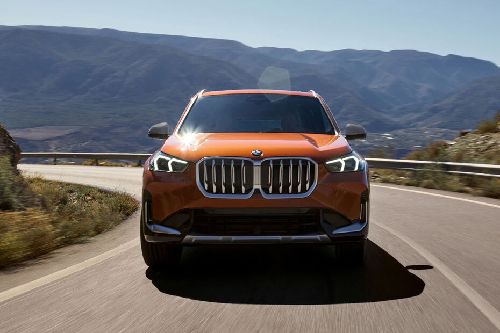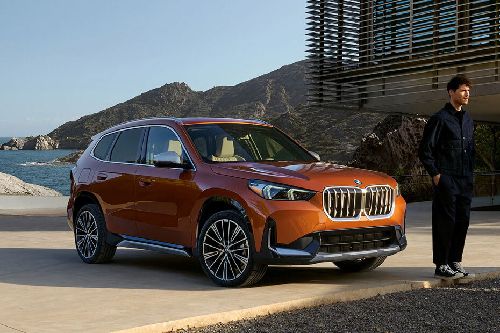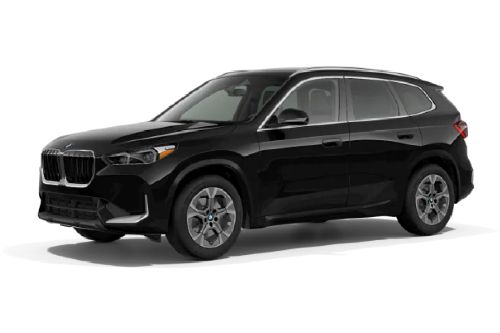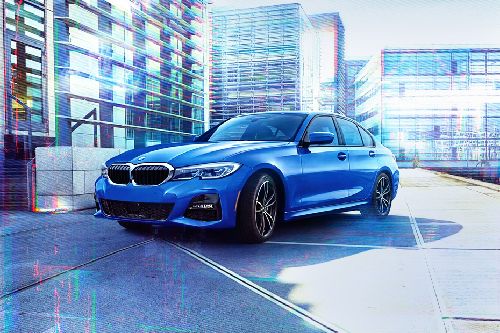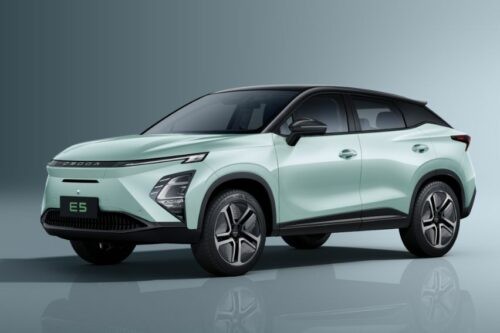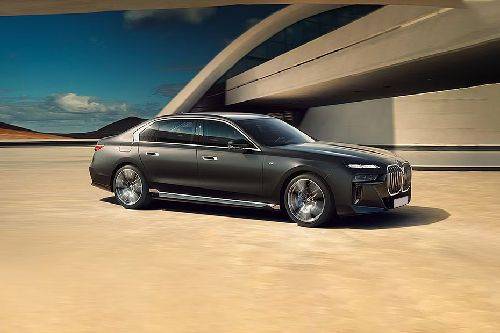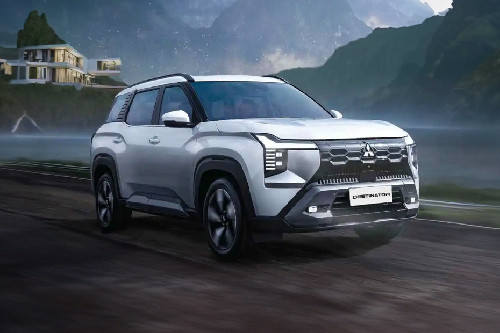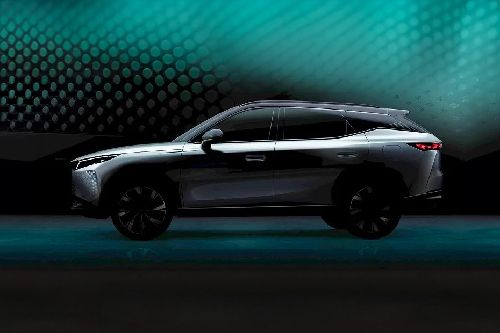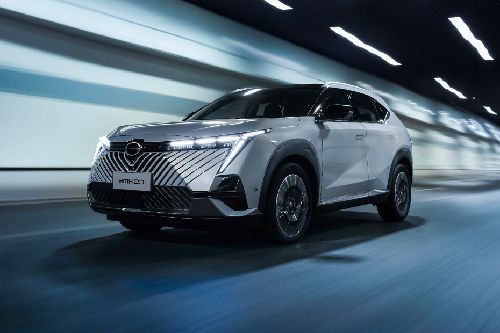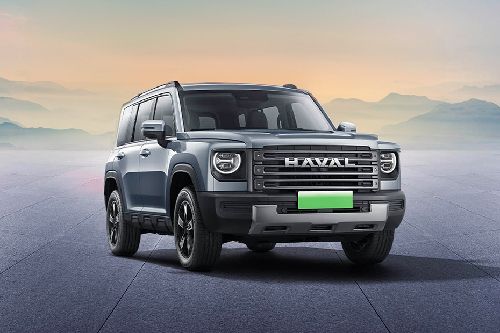BMW reveals new-look X1 with first-ever all-electric iX1

MANILA: The new BMW X1 builds on the concept of a sports utility vehicle (SUV) for the premium compact class. It features a new unique design, a high level of electrification across the range, and the latest in connectivity.
KEY TAKEAWAYS
What are the five variants of the new BMW X1?
The new BMW X1 is available in Sport Premier, xLine Premier, xLine Premier Pro, M Sport Premier, and M Sport Premier Pro variants.How much is the new BMW X1?
Prices for the X1 start at £35,130.
The new BMW X1 stands out from its competitors, thanks to an expanded standard specification, enlarged interior space with a premium atmosphere, the new BMW Operating System 8 with BMW Curved Display, and a wide array of automated driving and parking systems.

In its third generation, the BMW X1 provides fully electric driving. This new model will match the brand's existing battery electric vehicles and make driving an all-electric BMW more accessible to a wider audience. The new BMW X1 will be available with one petrol and two diesel engine options at launch. The new BMW iX1 xDrive30, the BMW Group's first luxury compact model based on a flexible vehicle architecture to have an all-electric drive system, will join the range immediately after launch, along with two plug-in hybrid variants.
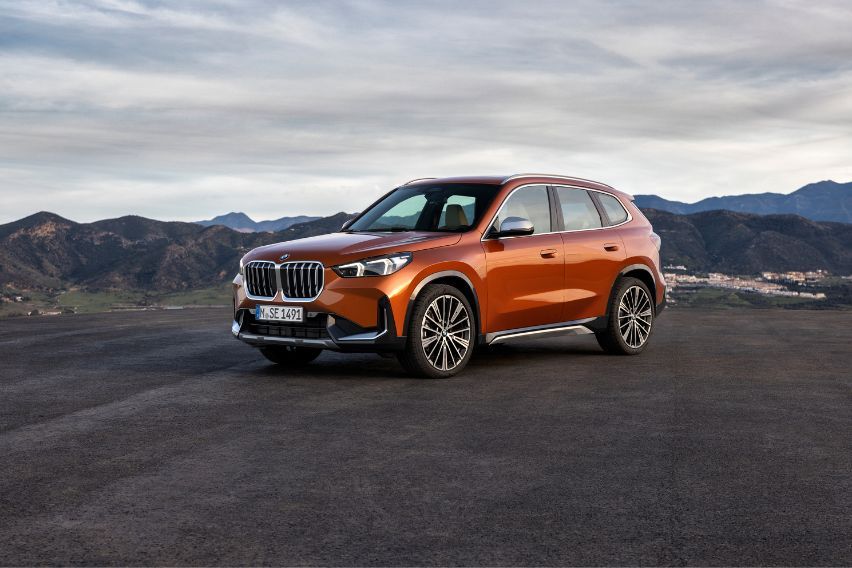
The BMW X1 comes in five variants: Sport Premier, xLine Premier, xLine Premier Pro, M Sport Premier, and M Sport Premier Pro. It is now available for order, with prices starting at £35,130.

All BMW X1 variants, as well as the high-voltage batteries for the BMW iX1 xDrive30, will be manufactured at BMW Group Plant Regensburg in Germany. The BMW Group will take another step toward its goal of creating the most sustainable supply chain in the automotive industry, with an emphasis on renewable energy during production processes and greater usage of secondary and renewable materials compared to its predecessor.

The new BMW X1 is 53mm longer, 24mm wider, and 44mm taller than its predecessor, measuring 4,500mm in length, 1,845 mm in width, and 1,642mm in height. It has a wheelbase of 2,692mm, which is 22mm longer than before, with track widths of 1,592mm in front and 1,593mm at the rear, up 31mm.

The large, almost square BMW kidney grille is at the heart of the new front end design, its contouring enhanced by the three-dimensional chrome surround. The grille bars come standard in a high-gloss black finish. In the outer sections of the lower air intake, large chrome strips highlight the front end's sophisticated look.
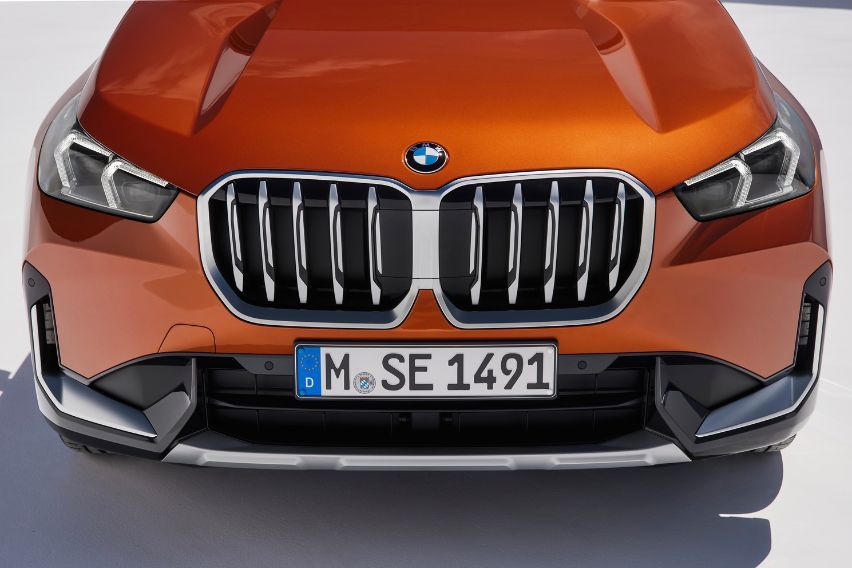
The new BMW X1 is also equipped with slim LED low and high beam headlights that extend to the sides of the vehicle. The low beam, high beam, and daytime driving lights are divided into three units by a distinguishing graphic, with the latter including the indicators.
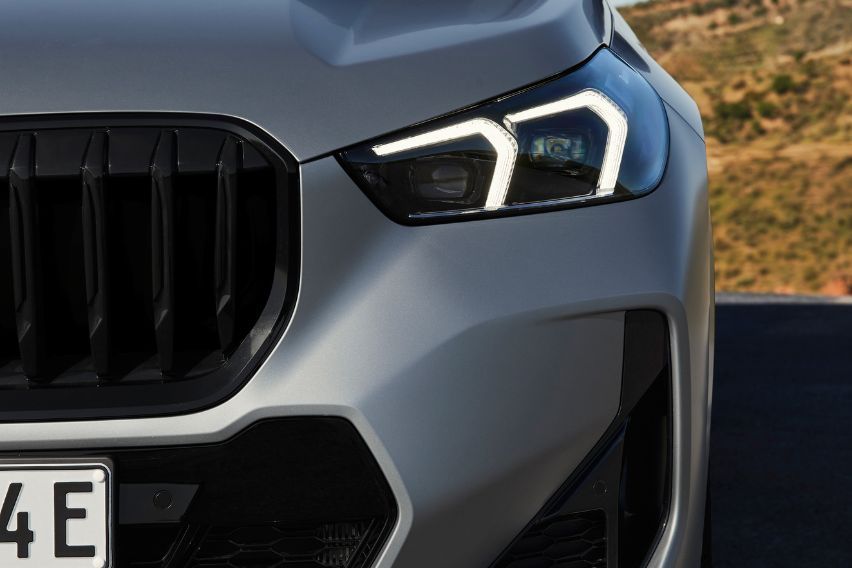
The wheel arches, doors, and shoulders of the body have sharply carved surfaces that create a dramatic interplay of light and shadow. The front and rear wheel arches are linked by a dynamically flowing character line, while the long roofline flows into a rear spoiler. The silhouette is expanded, owing to the shoulder-line above the flush door openers, which extends from the front wheel arches to the rear lights.

Horizontal lines, a narrow rear window, and wide wheel arches emphasize the width of the body at the rear. The rear apron features a prominent underride protection device and chrome side accents that echo the front look. LED technology is used in all functions of the rear lights. If the Adaptive LED Headlights are specified, the rear lights illuminate in a stunning "L" shape. The unusual patterning in the parts extending into the sides of the vehicle further distinguishes these optional rear lights.
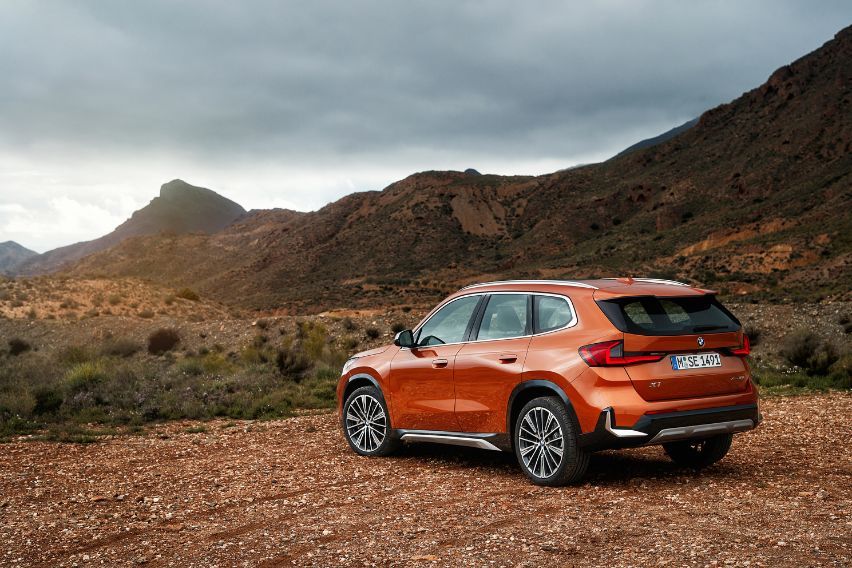
Among the xLine model's specific design features are exclusive 18-inch light-alloy wheels, dark grey body edging, BMW Individual Exterior Line Satin Aluminum, and Glacier Silver exterior mirror caps. The BMW kidney grille, side trim pieces, and stylish underride protection are all finished in Pearl-effect Chrome. Aluminum door sill covers, Sensatec perforated seat surfaces, illuminated interior trim strips in Black high-gloss, and Sensatec surfaces for the door shoulders and upper instrument panel are also included in the xLine variant.
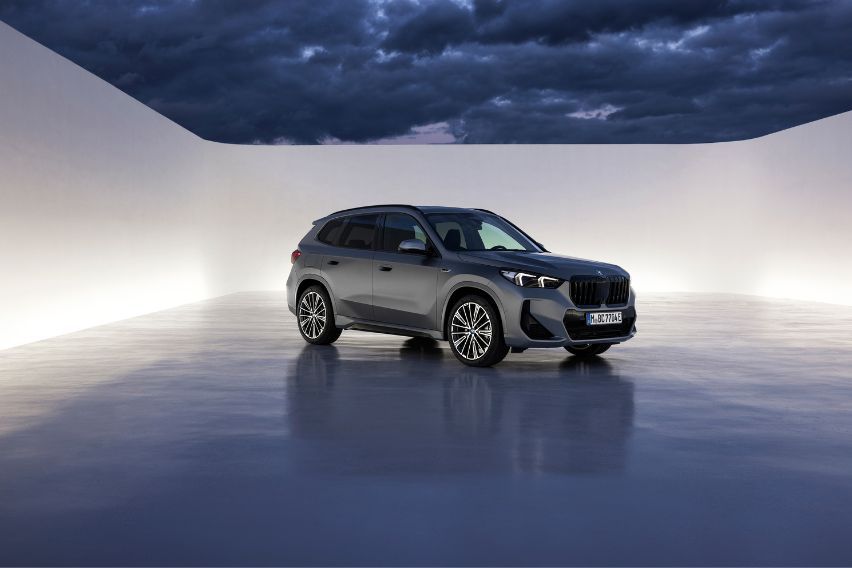
The M Sport variant is distinguished by large cooling air inlets on the sides of the front bumper and a distinctive rear apron with diffuser, as well as exclusive 19-inch M light-alloy wheels, adaptive M suspension, and M High-gloss Shadowline trim. Sport seats, anthracite-colored headliner, and a M leather steering wheel with gearshift paddles are among the interior features.

The new BMW X1 is distinguished by its elevated seating position, ample space, and cutting-edge functionality. The interior geometry and numerous details are inspired by the BMW iX interior concept, including the slender instrument panel, a stage for the BMW Curved Display, and a "floating" armrest with integral controls.

The seamless connection between the BMW Curved Display, voice control, the multifunction buttons on the steering wheel, and the BMW Head-Up Display defines the user experience on board the new BMW X1. The standard BMW Curved Display, which consists of a 10.25-inch information display and a 10.7-inch control display, is at the core of the new BMW X1. The screens merge into a single unit behind a seamless glass surface curved towards the driver. The cutting-edge graphics were created with a smartphone-style appearance, making them suitable for intuitive touch control.
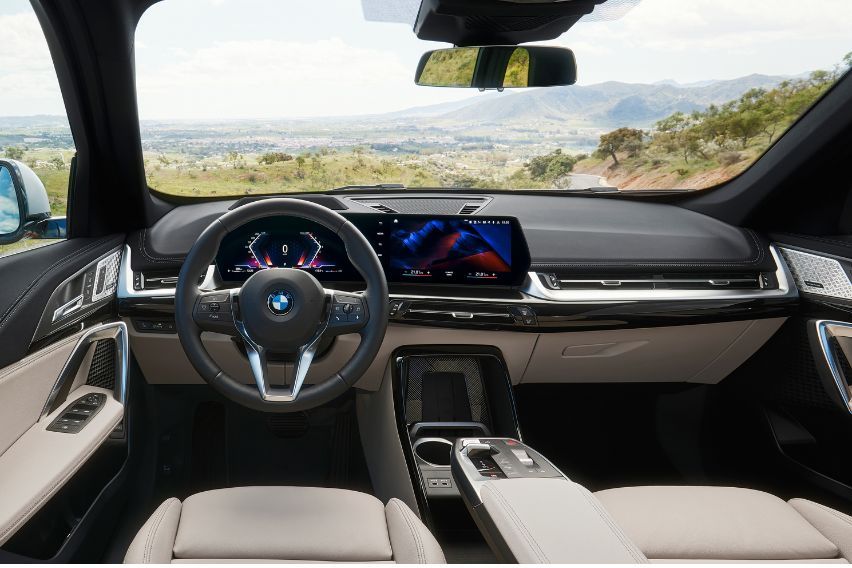
The new seats provide utmost comfort over long distances and extended functionality, with their prominent bolsters and adjustability of seat angle and depth. The driver seat in the xLine and M Sport Premier variants has electric seat adjustment with memory, and passenger electric seats are standard in Premier Pro variants.

The all-electric BMW iX1 xDrive30 is powered by two electric motors — one at the front axle and another at the rear — each combined with power electronics and transmission housed in a single, compact package. The drive units produce a combined output of 313 hp (including temporary boost) and 494 Nm of torque.

The car's charging technology and the 64.7-kWh high-voltage battery positioned flat under the vehicle's underbody are also part of the fifth-generation BMW eDrive technology. The high energy density of the battery and the efficiency of the drive system result in a combined power consumption of 18.4 to 17.3 kWh per 100km and a driving range of 257 to 272 miles.

The BMW iX1 xDrive30's Combined Charging Unit supports single- and three-phase AC charging up to 11 kW, with an optional boost to 22 kW (three-phase AC). As a result, the battery can be fully charged from empty in 6.5 hours as standard or three hours and 45 minutes as an option. DC recharging at up to 130 kW can charge the battery from 10% to 80% in 29 minutes or extend the range by 75 miles in just 10 minutes.

The charging software, like that of the BMW i7, has been improved. When the battery reaches a higher charge level, the new procedure drops the charging rate gradually rather than in a "stepped" pattern, resulting in even faster charging times.
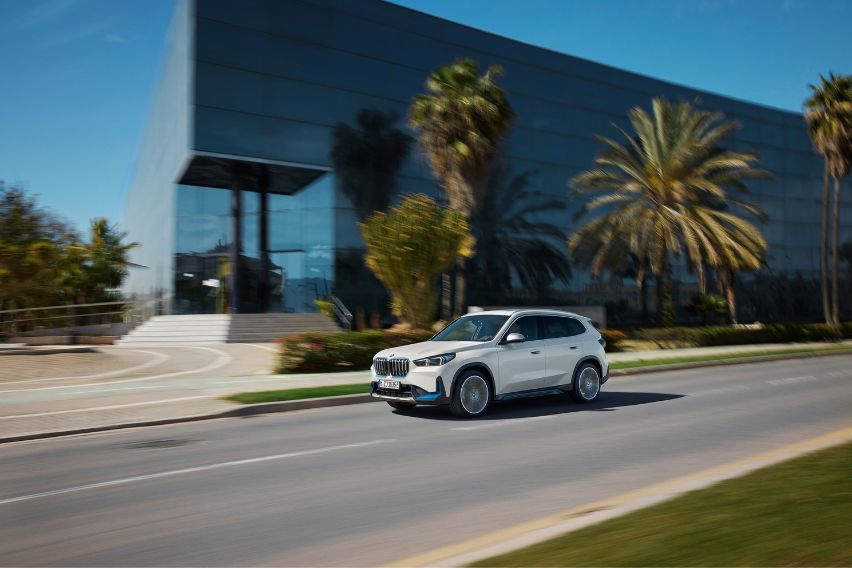
The battery's durability is improved by an optimized cooling strategy for DC charging. To prevent cell temperatures from dropping too low during fast charging, alternating phases of full and partial cooling power are used, shortening charging times and reducing aging. Individual charge point settings can be saved and retrieved automatically on repeated visits, while preheating can be performed manually while approaching a DC charging station.

The fifth-generation BMW eDrive technology used in the new BMW iX1 and BMW X1 plug-in hybrid variants is being developed with extreme caution to reduce CO2 emissions. Green electricity for battery cell production and increased use of secondary raw materials in the supply chain reduce CO2 emissions by approximately 20%.

At the moment, vehicles are made with about 30% recycled and reused material on average. The "secondary first" strategy aims to gradually increase this percentage to 50%. In fact, the proportion of the secondary aluminum used in the castings for the new BMW X1 is already up to 70%.

Many BMW X1 parts are composed of high-quality recycled plastics, with around 20% of the plastic parts being mono-material, such as underbody paneling, wheel arch covers, trim part mounting elements, and a range of unlaminated interior elements. The floor mats are made of 100% polyester with 55% recycled material. Econyl, a synthetic yarn made out of recycled fishing net collected from the sea, as well as worn flooring and residual waste from plastics manufacturing, is used in the floor coverings.

Since 2006, CO2 emissions from vehicle production have reduced by more than 70%. Since 2021, the BMW Group's international production network has operated under a net carbon-neutral policy. The new BMW X1 will benefit from the transition to cast aluminum wheels made exclusively using renewable electricity starting in 2024. The BMW Group will thus take another step toward its goal of establishing the most environmentally friendly supply chain in the whole automotive industry.
Photos from BMW
Also read: BMW releases special in-vehicle animation for Queen’s Platinum Jubilee
Sell your car at the best price
 Verified and genuine buyers
Verified and genuine buyers
BMW X1 Related Stories
- News
- Featured Stories
BMW Car Models
Don't Miss
Trending & Fresh Updates
- Latest
- Popular
You might also be interested in
- News
- Featured Stories
BMW Featured Cars
- Latest
- Popular
Latest BMW X1 Car Videos on Zigwheels

Compare & Recommended
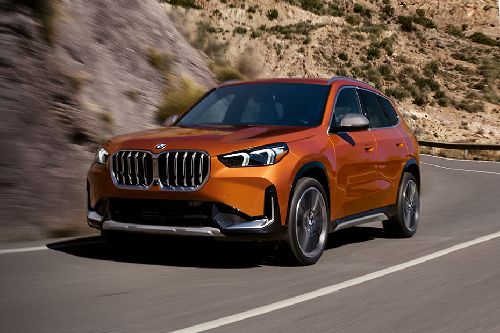
|
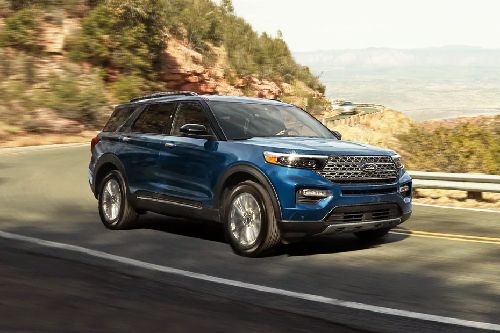
|
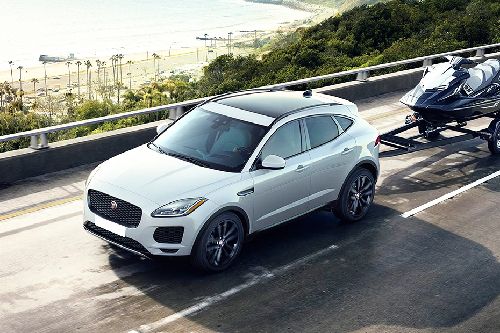
|
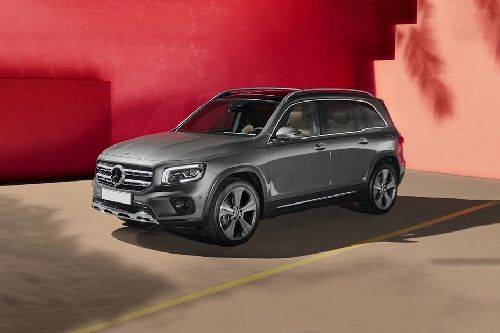
|

|
|
Seating
5
|
7
|
5
|
7
|
5
|
|
Fuel Type
Diesel
|
Gasoline
|
Diesel
|
Gasoline
|
Gasoline
|
|
Engine
1995
|
2296
|
1999
|
1991
|
1322
|
|
Power
150
|
299
|
148
|
306
|
163
|
|
Torque
350 Nm
|
420 Nm
|
380 Nm
|
400 Nm
|
250 Nm
|
|
Transmission Type
Automatic
|
Automatic
|
Automatic
|
Automatic
|
Automatic
|
|
|
Trending SUV
- Latest
- Upcoming
- Popular
BMW X1 Car Articles From Carmudi
- journal



